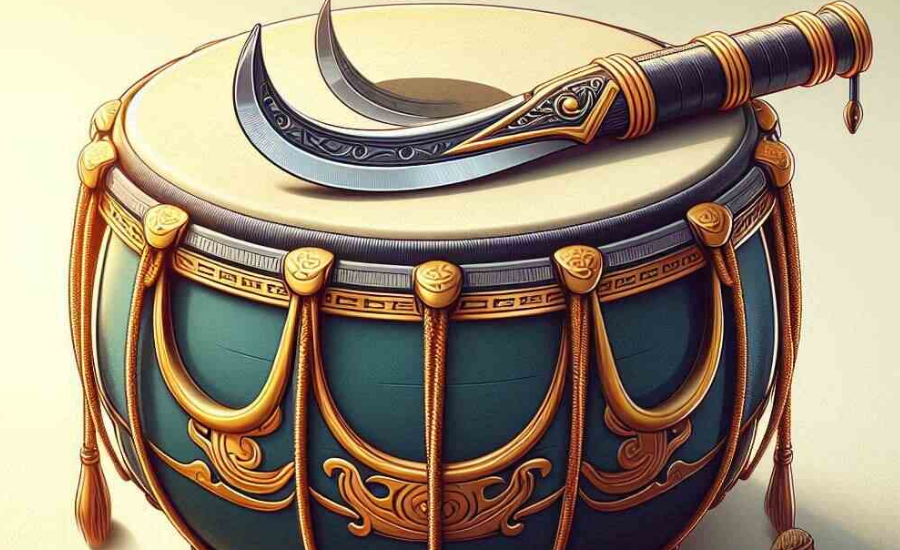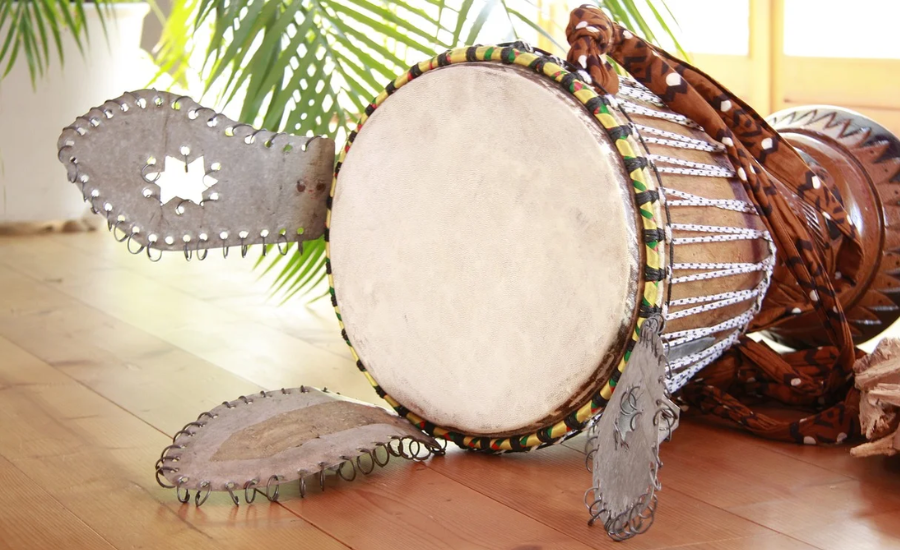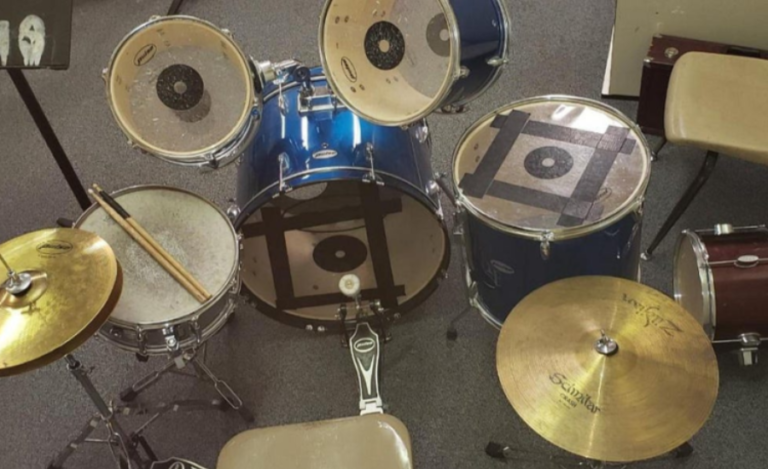Introduction
The scimitar drum meaning resonated through the ancient battlefield, symbolizing the sharp rhythm of war and the relentless clash of swords. The scimitar drum is a traditional percussion instrument renowned for its distinctive crescent shape and rich cultural heritage. With its striking design and profound historical significance, this ancient musical device continues to captivate audiences and musicians alike. In this comprehensive guide, we will delve into the various aspects of the scimitar drum, including its components, acoustic properties, cultural significance, and modern adaptations. Through a detailed exploration, we aim to highlight the enduring importance of this unique instrument in both traditional and contemporary musical contexts.
What is a Scimitar Drum Meaning?
The scimitar drum is a percussion instrument characterized by its crescent-shaped body and scimitar-like stick used for striking the drum’s head. Historically, this instrument has been an integral part of cultural and religious ceremonies, especially in the Middle East and parts of Asia. Its design, which resembles a curvy sword, not only contributes to its visual appeal but also to its distinctive sound. The scimitar drum’s deep, resonant tones and ceremonial use have made it a symbol of valor, regality, and spiritual significance across various cultures.
The drum’s crescent shape is not merely decorative but serves a functional purpose. The curvature of the drum body enhances its acoustic properties, allowing it to produce a range of tonal effects that are both captivating and versatile. The scimitar drum is often associated with traditional rituals and performances, where its sound is used to invoke spirits, celebrate cultural events, and mark significant occasions.
Components and Design

The construction of the scimitar drum involves several key components that contribute to its unique sound and appearance. The drum’s head is traditionally made from calfskin, which is stretched over the drum body and secured in place. This natural material is known for its ability to produce a deep, resonant sound when struck. The quality of the calfskin used in drum making is crucial, as it directly affects the instrument’s acoustic performance.
The body of the scimitar drum is typically constructed from a combination of wood and metal. The wooden body provides durability and resonance, while metal elements are often used to reinforce the drum and enhance its structural integrity. The integration of these materials allows the scimitar drum to withstand the rigors of regular use while maintaining its aesthetic appeal.
One of the most striking features of the scimitar drum is its crescent-shaped design. The curvature of the drum body is not only visually impressive but also contributes to the instrument’s acoustic properties. The crescent shape helps to amplify the drum’s sound and produce a more dynamic and engaging tonal quality.
In addition to its functional components, the scimitar drum is often adorned with intricate artwork and decorative elements. These embellishments reflect the cultural and artistic traditions of the regions where the drum is used. The combination of traditional craftsmanship and modern design techniques has resulted in scimitar drums that are both visually stunning and functionally effective.
Acoustic Resonance
The acoustic properties of the scimitar drum are a result of its unique design and construction. The drum’s sound is produced by striking the calfskin head with the scimitar-like stick. Depending on how the drum is struck, it can produce a range of tonal effects, from deep and resonant bass sounds to sharp and penetrating highs.
The method of striking the drum significantly impacts its tonal quality. When using fingers, the drum produces a flat, flowing sound that is rich in harmonic overtones. Striking the drum with the palm generates muffled, cymbal-like effects, adding a layer of complexity to the sound. Using drumsticks allows for a more pronounced and vibrant tone, enhancing the drum’s overall impact.
The scimitar drum’s acoustic resonance is further enhanced by its crescent shape. The curvature of the drum body helps to focus and amplify the sound, resulting in a more immersive and engaging listening experience. This dynamic range of tonal effects makes the scimitar drum a versatile instrument suitable for a variety of musical genres and performance contexts.
Cultural Significance
The scimitar drum holds profound cultural and spiritual significance in the regions where it is traditionally used. Historically, the drum has been an integral part of religious ceremonies and cultural rituals, where its sound was believed to invoke divine blessings and welcome good spirits.
In the Middle East and parts of Asia, the scimitar drum was often used in ceremonies to honor deities and mark significant religious occasions. Its distinctive sound was thought to bridge the gap between the human and divine realms, creating a sacred space for worship and reflection. The drum’s ceremonial use also extended to festivals, celebrations, and communal gatherings, where its vibrant tones helped to enhance the overall atmosphere and sense of occasion.
The scimitar drum’s cultural significance is also reflected in its association with nobility and martial prowess. In ancient times, the drum was often used in royal courts and military contexts, where its majestic appearance and powerful sound symbolized power and prestige. The drum’s crescent shape and scimitar-like stick were seen as symbols of valor and authority, reinforcing its status as a prestigious and revered instrument.
Innovation and Modern Adaptations

While the scimitar drum has a rich tradition of craftsmanship and artistic design, modern innovations have continued to enhance its appeal and functionality. Artisans today experiment with a blend of traditional materials and contemporary techniques to create scimitar drums that are both aesthetically pleasing and functionally effective.
One area of innovation is the use of modern components in drum construction. For example, synthetic materials may be used alongside traditional calfskin to improve durability and consistency. The incorporation of advanced manufacturing techniques also allows for more precise and consistent drum construction, resulting in instruments that are more reliable and easier to play.
In addition to structural innovations, modern scimitar drums often feature updated design elements that reflect contemporary artistic trends. This fusion of traditional and modern aesthetics results in drums that retain their cultural heritage while appealing to modern audiences. The integration of new design elements and construction techniques has helped to ensure the continued relevance and popularity of the scimitar drum in the contemporary music scene.
Features of Scimitar Drums
Scimitar drums are distinguished by several key features that contribute to their unique appearance and functionality. The most notable feature is the crescent-shaped body, which gives the drum its distinctive look and enhances its acoustic properties. The scimitar-like stick used for striking the drum is another defining characteristic, adding to the instrument’s visual appeal and functionality.
The scimitar drum’s body is often adorned with intricate artwork and decorative elements, reflecting the cultural and artistic traditions of the regions where it is used. These decorations may include geometric patterns, floral motifs, and other designs that showcase the craftsmanship and creativity of the artisans who create the drums.
The drum’s construction also includes several practical features that enhance its usability. For example, the scimitar drum may be equipped with an extra-large belt or strap for easy portability, allowing musicians to carry the drum to different locations and performances. The metal strings used to reinforce the drum’s body also contribute to its durability and structural integrity, ensuring that the instrument can withstand the rigors of regular use.
Scimitar Drum Variants
In addition to the traditional scimitar drum, there are several variants that offer different percussive features and acoustic qualities. These variants include:
- Scimitar Drum Cymbal: This variant features a pair of metallic flat plates that are struck with sticks to produce a compelling sound. The cymbal is often used in conjunction with the scimitar drum to enhance the overall percussion experience. The combination of the drum and cymbal creates a dynamic and engaging sound that adds depth and complexity to musical performances.
- Scimitar Drum Wig: The scimitar drum wig is another variant known for its percussive features and excellent bass sound. This type of drum holds cultural significance and is used in various traditional and celebratory events. The wig variant is often characterized by its distinctive shape and resonant tones, making it a valuable addition to any percussion ensemble.
Scimitar Drums in Modern Music

In contemporary music, scimitar drums are increasingly popular among drummers and composers who appreciate their unique sound and historical significance. Modern musicians often incorporate scimitar drums into genres such as jazz, fusion, and world music, where the instrument’s distinctive tones can enhance the overall musical experience.
The ongoing adaptation of scimitar drums reflects a growing interest in blending traditional musical instruments with modern musical styles. Musicians and composers continue to explore new ways to incorporate scimitar drums into their performances, experimenting with different techniques and sounds to create innovative and engaging music.
Facts
- Design and Shape: The scimitar drum features a crescent-shaped body that resembles a curvy sword, which contributes to its unique visual appeal and acoustic properties.
- Historical Use: Traditionally, the scimitar drum has been integral to cultural and religious ceremonies in the Middle East and parts of Asia, symbolizing valor, regality, and spiritual significance.
- Construction Materials: The drum’s head is typically made from calfskin, which is known for its deep, resonant sound. The body is often constructed from a combination of wood and metal to enhance durability and resonance.
- Acoustic Properties: The scimitar drum can produce a range of tonal effects, including deep, resonant bass sounds and sharp, penetrating highs. The crescent shape of the drum enhances its acoustic properties by focusing and amplifying the sound.
- Cultural Significance: The scimitar drum has been used in ceremonies to honor deities and mark significant religious occasions. It is also associated with nobility and martial prowess, often used in royal courts and military contexts.
- Modern Innovations: Contemporary scimitar drums incorporate both traditional materials and modern construction techniques. Synthetic materials may be used alongside calfskin to improve durability, and advanced manufacturing methods ensure precision and consistency.
- Variants: There are several variants of the scimitar drum, including the Scimitar Drum Cymbal and Scimitar Drum Wig. These variants offer different percussive features and acoustic qualities, expanding the drum’s versatility.
- Contemporary Usage: In modern music, scimitar drums are popular among musicians who incorporate them into genres such as jazz, fusion, and world music. Their distinctive tones are used to enhance the overall musical experience.
FAQs
Q: What is the origin of the scimitar drum?
A: The scimitar drum originates from the Middle East and parts of Asia. It has been used in cultural and religious ceremonies for centuries, reflecting the rich musical traditions of these regions.
Q: How is the scimitar drum constructed?
A: The scimitar drum is constructed with a crescent-shaped body made from a combination of wood and metal. The drumhead is traditionally made from calfskin, stretched over the drum body and secured in place.
Q: What cultural significance does the scimitar drum hold?
A: The scimitar drum holds significant cultural and spiritual importance, often used in religious ceremonies and cultural rituals to honor deities and mark significant occasions. It is also associated with nobility and martial prowess.
Q: How has the scimitar drum been adapted in modern times?
A: Modern scimitar drums feature innovations such as synthetic materials and advanced manufacturing techniques, which improve durability and precision. Contemporary designs also incorporate new artistic elements while retaining traditional aesthetics.
Q: How is the scimitar drum used in contemporary music?
A: In modern music, scimitar drums are used in genres such as jazz, fusion, and world music. Musicians incorporate the drum to add unique tonal qualities and enhance the overall musical experience.
Conclusion
The scimitar drum is a remarkable instrument with a rich history and profound cultural significance. Its distinctive design, acoustic properties, and ceremonial use have made it a cherished and revered instrument across various cultures. As technology and artistic trends continue to evolve, the scimitar drum remains a testament to the enduring importance of traditional musical instruments in the contemporary music scene.
With its unique blend of historical craftsmanship and modern innovation, the scimitar drum continues to captivate audiences and musicians alike. Whether used in traditional ceremonies or contemporary performances, the scimitar drum remains a powerful and expressive tool for creating memorable and impactful music. As we look to the future, we can anticipate further developments and adaptations of this iconic instrument, ensuring its continued relevance and importance in the world of music.
Keep connected for the latest updates and alerts: Vents Buzz
